Why great teams fail before the first standup
Sixty percent of outsourced development delays are traceable to poor internal readiness, not poor execution. Without a clear roadmap, technology fit, and scope alignment, even top-tier engineers cannot succeed. That is like handing a pilot a plane but no flight plan.
In projects across regulated industries and high-growth SaaS environments, teams often stall when objectives remain vague. For example, at Swissphone the kickoff objective for their critical-incident platform was refined from “build backend” to “reliable delivery under load plus CAP670 compliance.” That precise goal let the team launch on day one with zero blockers and reach full sprint velocity.
This checklist breaks down nine pre-development practices. From strategic vision to final readiness review, each step is battle-tested to save you weeks, reduce risk, and help your team fly rather than flail. Do less, produce more — start here.
The 9-step pre-development readiness checklist in a nutshell
Before you hire extra hands, ensure your internal engine is primed. These nine steps build a solid runway for your development lift-off.
- Clarify your strategic vision and key performance indicators.
- Define user and business requirements.
- Validate and select the technology stack.
- Lock scope, budget, and engagement model.
- Provision development infrastructure.
- Set Agile process and communication cadence.
- Finalize hiring and onboarding toolkit.
- Ensure legal, compliance, and intellectual property safeguards.
- Run a final readiness review.
Each step aligns your people, process, and technology so you hit sprint velocity from day one.
1. Clarify your strategic vision and KPIs
Without clear objectives, development teams often circle back on the same tasks and squander weeks on rework. At TYMIQ, we begin every project by defining a concrete vision statement paired with measurable KPIs.
This approach turns abstract goals into actionable checkpoints, ensuring each sprint delivers quantifiable progress toward your strategic targets. By aligning on outcomes before writing code, you prevent scope drift and keep stakeholders unified around a common metric of success.
Key actions
- Create a one-pager summarizing business goals and success criteria
- Tie sprint velocity to measurable business outcomes
- Align stakeholder expectations around ROI and timeline
TYMIQ example
For the critical incident platform, we defined the kickoff goal as “reliable delivery under load + CAP 670 compliance.” That clarity focused the team on performance tests and security audits before writing a single line of code.
Tools
- Stakeholder workshop to capture strategic priorities
- Outcome-first documentation template for transparent decision-making
2. Define user and business requirements
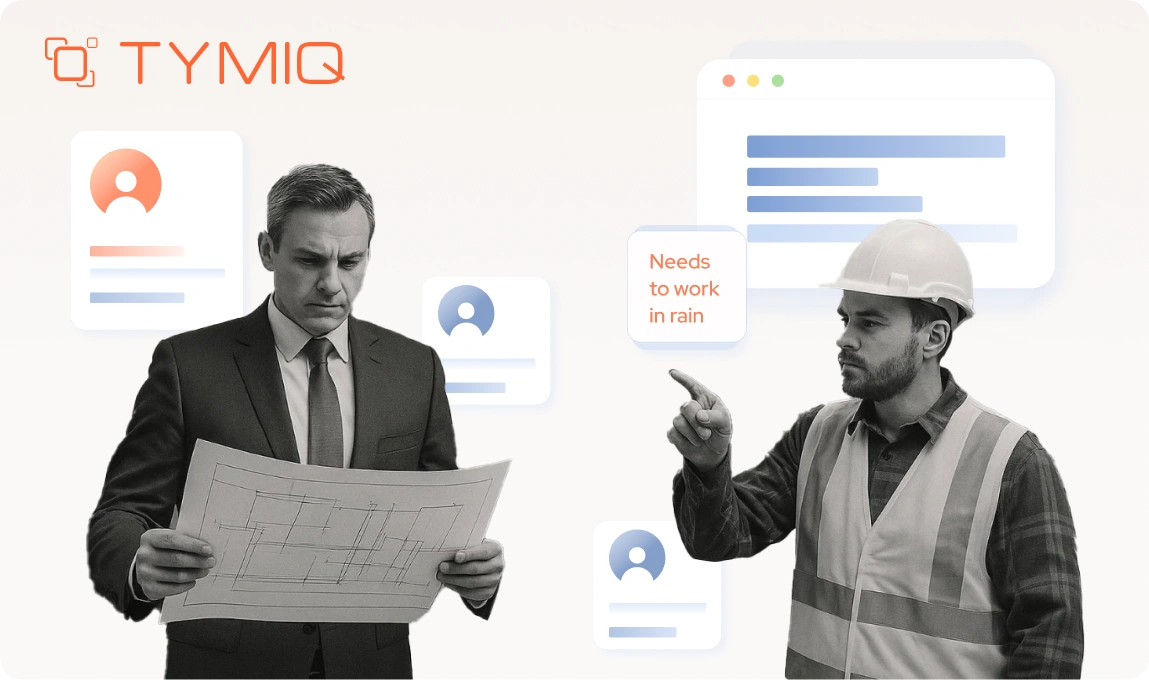
Too often, companies dive into specifications without a clear sense of who they are building for. At TYMIQ, we start by mapping two to three core personas. Each persona captures a distinct role, environment, and key pain points, grounding every requirement in real user needs rather than abstract feature requests.
Map core personas
- Interview stakeholders and observe workflows.
- Create one-page profiles — name, role, goals, frustrations.
- Validate with end users to uncover hidden constraints.
Prioritize by business value
- Link each requirement to a key performance indicator or revenue driver.
- Use a MoSCoW matrix (Must, Should, Could, Will not) to prevent scope creep.
- Review priorities in a value versus effort workshop to align stakeholders.
TYMIQ example
During ATC-IDS modernization, we defined two personas: air navigation assistants under high pressure and support engineers responsible for uptime.
By explicitly documenting what must stay unchanged for both groups, we protected critical workflows and focused development on performance and compliance.
3. Validate and select the tech stack
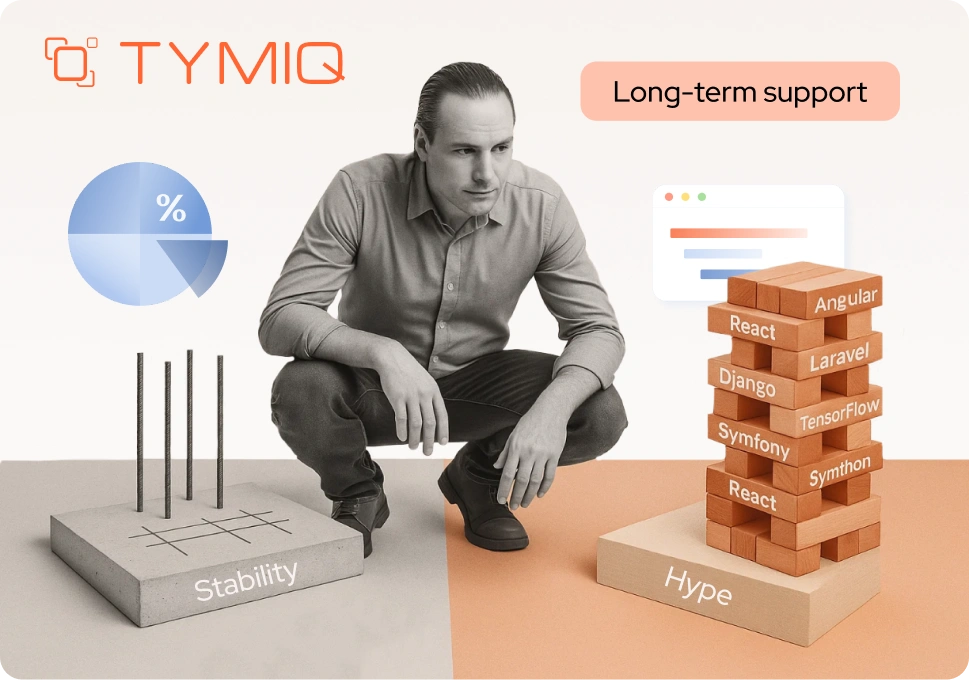
Selecting a technology stack is like choosing the foundation of a building. It must be robust, maintainable, and suited to your load. A popular framework can dazzle with features, but if the community fades or support stalls, you accrue technology stack debt. Effort spent later on upgrades and patches instead of delivering value.
Key actions
- Avoid technology stack debt. Evaluate each option’s maturity, ecosystem health, and long-term support policies.
- Spike under real conditions. Prototype critical paths (load tests, data migrations, reporting flows) to reveal hidden limitations.
- Record your rationale. Use a lightweight decision log or technology radar so future teams understand why you chose each component.
TYMIQ example
As part of the Port of Eilat reengineering, we built a sandbox environment combining ASP.NET Core and React. We simulated peak cargo reports and integration points, then benchmarked throughput, error rates, and developer productivity.
With data in hand, we selected that technology stack, balancing performance needs against maintainability and avoiding unnecessary hype.
4. Lock scope, budget, and engagement model
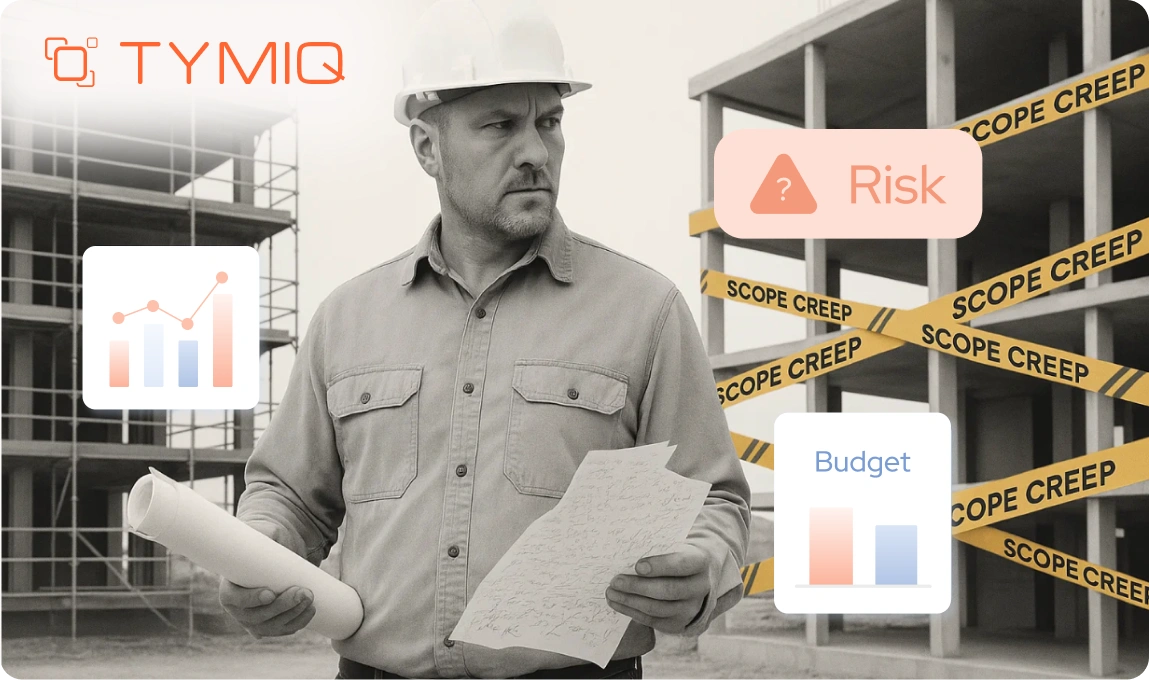
Locking down scope and budget up front is like agreeing on a building blueprint before laying a single brick. Without a shared definition of “what’s in” and “what’s out,” teams face endless change requests, ballooning costs, and missed deadlines.
At TYMIQ, we help clients choose the model that best balances predictability and flexibility, then capture every assumption in a concise deck.
Fixed-scope vs. full-time equivalent time-and-materials
Fixed-scope engagement
- Ideal when requirements are stable and well understood.
- Delivers a defined set of features for a fixed price and timeline.
- Shifts most risk to the delivery partner, useful for budget-constrained projects.
Full-time equivalent time-and-materials
- Suited to evolving requirements or exploration phases.
- Charges based on actual effort and resources; fosters continuous reprioritization.
- Requires robust governance to prevent runaway costs.
Out-of-scope items and non-functional requirements
- Explicitly list “won’t do” features to prevent scope creep.
- Document non-functional requirements (performance, security, compliance) as first-class requirements.
- Review regularly to ensure cross-team alignment on latency targets, data retention, and uptime SLAs.
TYMIQ practice: Lean scope deck
Every engagement begins with a five-slide lean scope deck.
- Feature list – high-level backlog items tied to business value.
- Risk assumptions – known unknowns and mitigation approaches.
- Milestone map – key delivery dates and dependencies.
- Budget overview – estimated costs per phase or resource.
- Governance plan – decision-making cadences and change-control process.
By formalizing these elements before kickoff, we lock in clarity, manage stakeholder expectations, and give our delivery team the stable foundation they need to sprint confidently from day one.
5. Provision development infrastructure
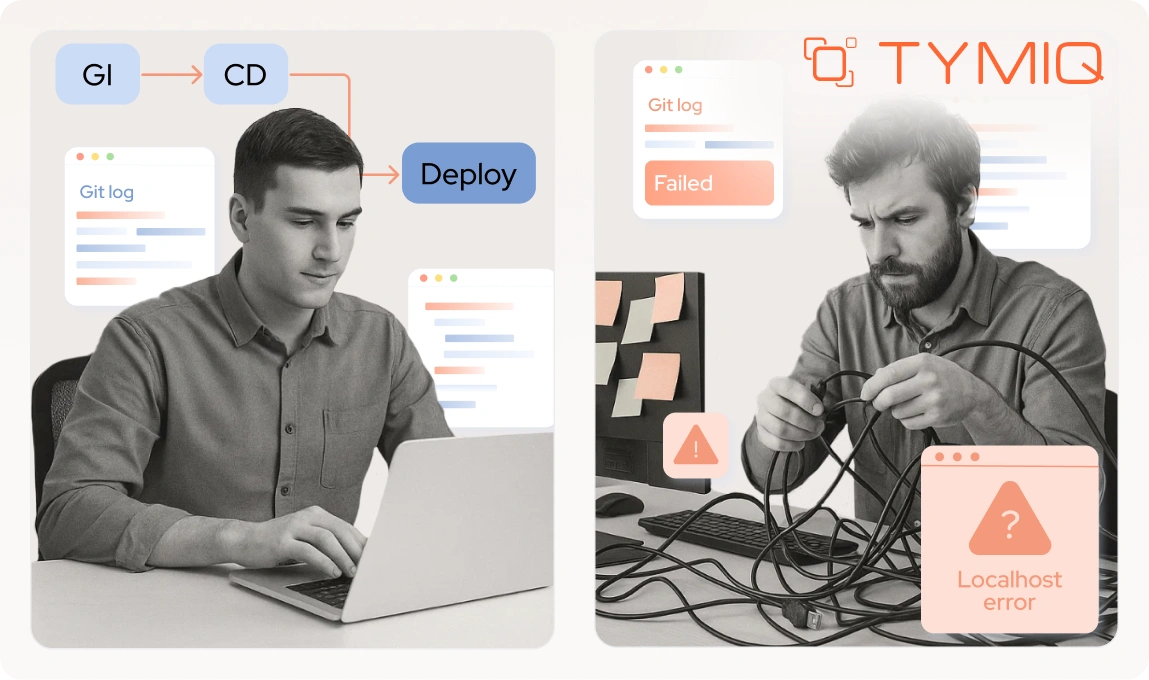
Just as a skyscraper needs solid scaffolding before the first beam is lifted, your development effort requires a fully configured infrastructure before the first line of code lands in Git. Without automated pipelines, isolated test beds, and secure credential management, teams waste hours on manual setup, environment drift, and firefighting.
Key actions
- Automate CI/CD. Provision pipelines that build, test, and deploy on every commit and include linting, unit tests, and security scans as gatekeepers.
- Initialize version control. Create Git repositories with branch protections and merge checks and establish naming conventions and directory structure templates.
- Stand up test environments. Deploy isolated development, staging, and sandbox clusters mirroring production, seed mock data, and configure feature flags for safe experimentation.
- Manage secrets and credentials. Use a vault or secrets manager to store API keys, certificates, and tokens and automate secret injection into pipelines and runtime environments.
TYMIQ example
Before sprint one kicked off on E-procurement migration, our team delivered a fully Kubernetes-enabled continuous integration/continuous delivery pipeline on Google Cloud.
Every push triggered automated builds, integration tests, and blue/green deployments, eliminating manual hand-offs and ensuring the platform was production-ready from day one.
Tools and templates
- Infrastructure as code modules (Terraform, Pulumi) for repeatable cluster provisioning.
- CI/CD frameworks (GitLab CI, Jenkins, GitHub Actions) with preconfigured job templates.
- Container registries and Helm charts for consistent artifact management.
- Secrets vaults (HashiCorp Vault, AWS Secrets Manager) with role-based access controls.
6. Set Agile process and communication cadence
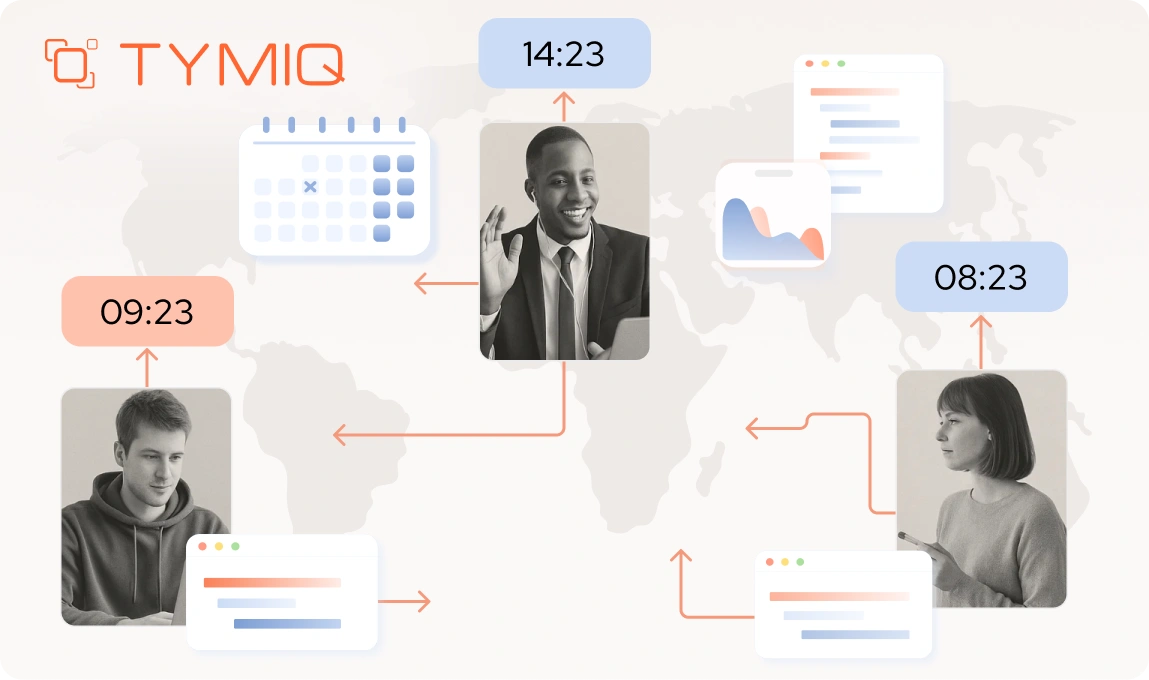
Even the best engineers will stall without a rhythm. Agile without structure is just chaos with better branding. That’s why you should define the team’s operating model before kickoff, so from sprint one, everyone knows the rituals, roles, and reporting expectations.
Key actions
Define sprint cadence and rituals
- Set sprint length (typically one to two weeks) and fix ceremonies. Planning, stand-ups, reviews, and retrospectives.
- Agree on story-point system and velocity-tracking approach.
- Clarify roles. Who owns backlog grooming? Who signs off on definitions of done?
Establish sync and async communication flows
- Use a mix of synchronous (stand-ups, demos) and asynchronous tools (Slack, Confluence, Loom).
- Create channels for fast unblockers and longer-term documentation.
- Ensure decision logs and action items are captured and visible to all.
Bridge time zones and team models
- For distributed or hybrid teams, introduce asynchronous daily updates via Slack or Loom.
- Use shared calendars and overlapping windows for key syncs.
TYMIQ case
In the Prylada IoT project, we ran full Scrum with embedded and cloud teams across time zones. Daily asynchronous logs, Loom walkthroughs, and shared Confluence pages helped eliminate blockers before they grew into delays. This hybrid flow became a blueprint for all future cross-functional pods.
Tools that work
- For process: Jira (issues, sprints, reporting), Miro (sprint goals, retrospectives)
- For async: Loom (video briefs), Confluence (knowledge hub), Slack (daily check-ins)
- For velocity: Jira dashboards, burndown charts, story-point velocity trackers
7. Finalize hiring + onboarding toolkit
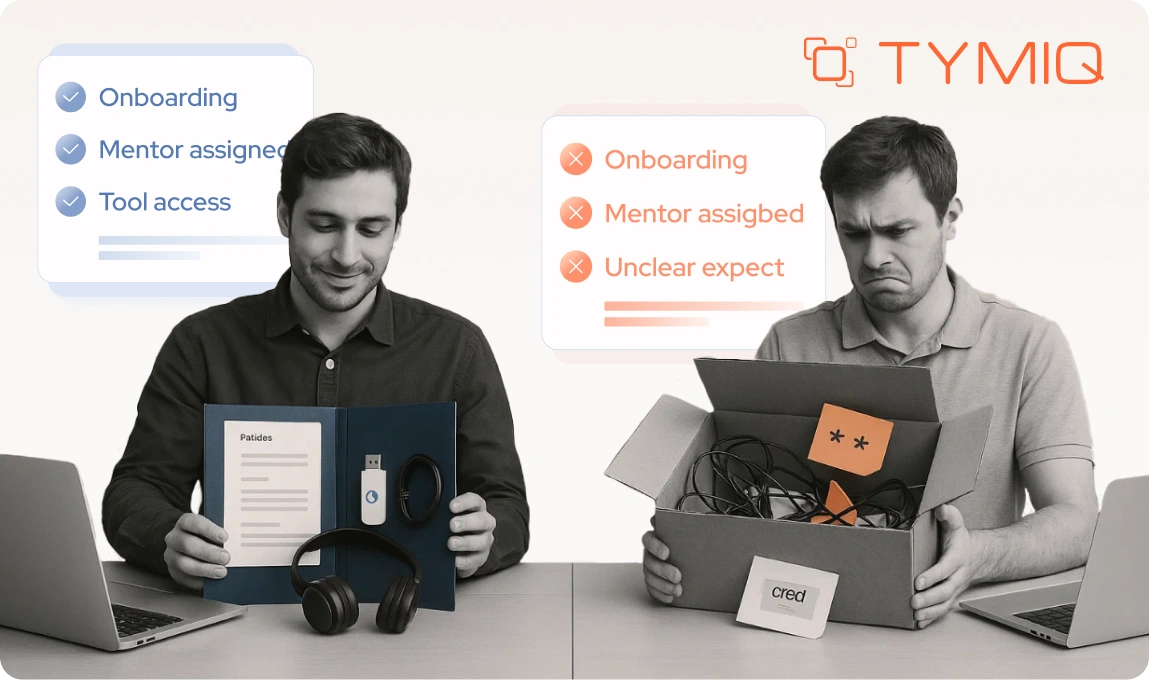
Hiring developers isn’t the finish line, it’s the starting pistol. Without a structured onboarding experience, even the most talented engineers burn time on guesswork, context hunting, and tool setup. At TYMIQ, we treat onboarding as a product, tested, streamlined, and optimized for fast ramp-up.
Key actions
Write clear role templates
- Define must-have technical skills (for example, .NET Core, React) and soft skills (for example, asynchronous communication, ownership mindset).
- Include expected responsibilities by sprint phase (for example, delivery, documentation, quality assurance support).
- Set evaluation criteria up front to align hiring managers and delivery leads.
Build a “day one ready” onboarding pack
- Include quick-start guides, project structure overviews, and architecture diagrams.
- Offer fifteen to thirty-minute explanatory videos from product and technology leads.
- Preconfigure local development environments or offer Docker containers for setup-free ramp-up.
Enable knowledge transfer via mentoring
- Pair new joiners with senior engineers for the first sprint.
- Set up short daily check-ins during onboarding week.
- Document tribal knowledge in a shared space for ongoing reference.
TYMIQ deliverables
Every new engineer receives:
- A structured onboarding pack with project guides, credentials, and walkthrough videos.
- Predefined Slack channels for technology, product, and support.
- A mentor assignment for technical and process questions.
In our engagement in accident platfrom, this setup helped new engineers contribute production code within five working days.
8. Ensure legal, compliance, and intellectual property safeguards
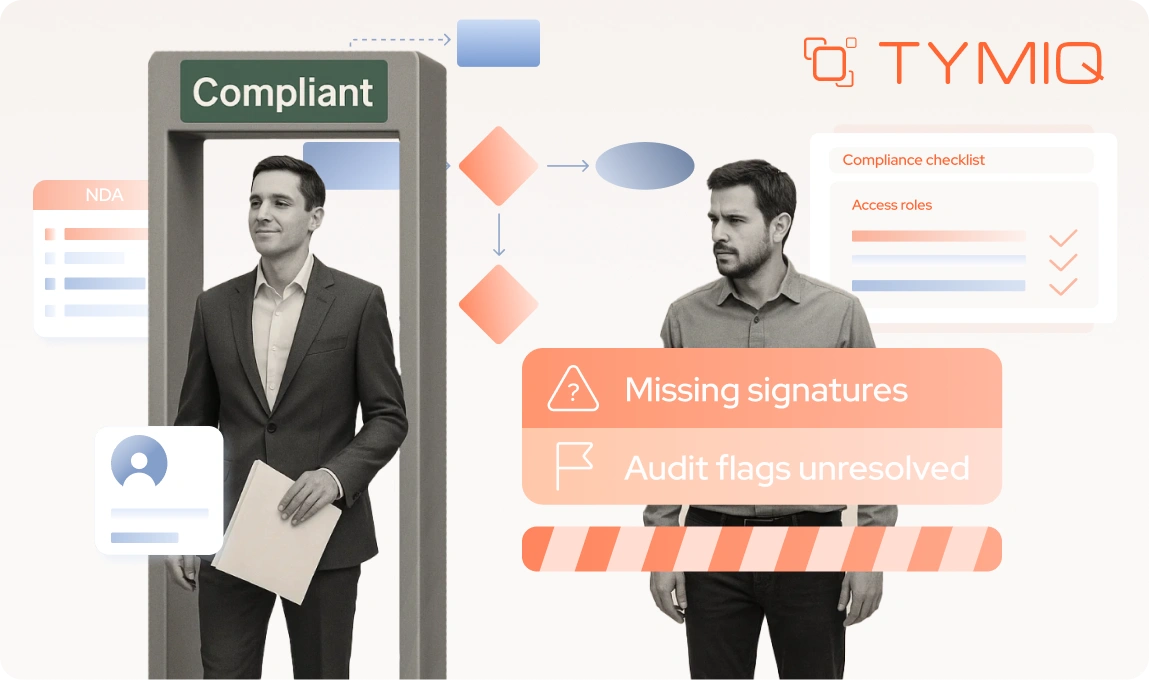
No matter how agile your team or how modern your technology stack, overlooking legal and compliance essentials can bring the project to a full stop, sometimes mid-sprint, sometimes mid-acquisition. Before a single commit, you should lock down the legal foundations that protect your business, intellectual property, and users.
Key actions
Finalize legal agreements
- Ensure all contributors (internal or vendor) have signed non-disclosure agreements and intellectual property assignment clauses.
- Confirm contracts include clear ownership of deliverables, usage rights, and exit provisions.
- If outsourcing, review jurisdiction-specific clauses and dispute-resolution terms.
Implement security and data-compliance safeguards
- Align with the General Data Protection Regulation, Service Organization Control 2, or Health Insurance Portability and Accountability Act, depending on the domain and geography.
- Segment environments and access roles (development, staging, production) with audit logging.
- Conduct risk assessments and document your data-flow diagrams.
Standardize compliance checklists
- Use repeatable templates for contractor onboarding, vendor evaluations, and code-security reviews.
- Define a process for managing vulnerabilities, incident response, and third-party library audits.
TYMIQ practice
Every engagement begins with EU-compatible contract packages that include non-disclosure agreements, intellectual property assignment, and subcontractor clauses, pre-approved by legal across multiple jurisdictions. We also deploy automated compliance checklists, covering everything from password-rotation policies to endpoint encryption.
In projects like critical alerting platform, these safeguards weren’t just best practices; they were launch prerequisites. By handling compliance upfront, we enabled fast audit approvals and uninterrupted development even in regulated industries.
9. Run a final readiness review
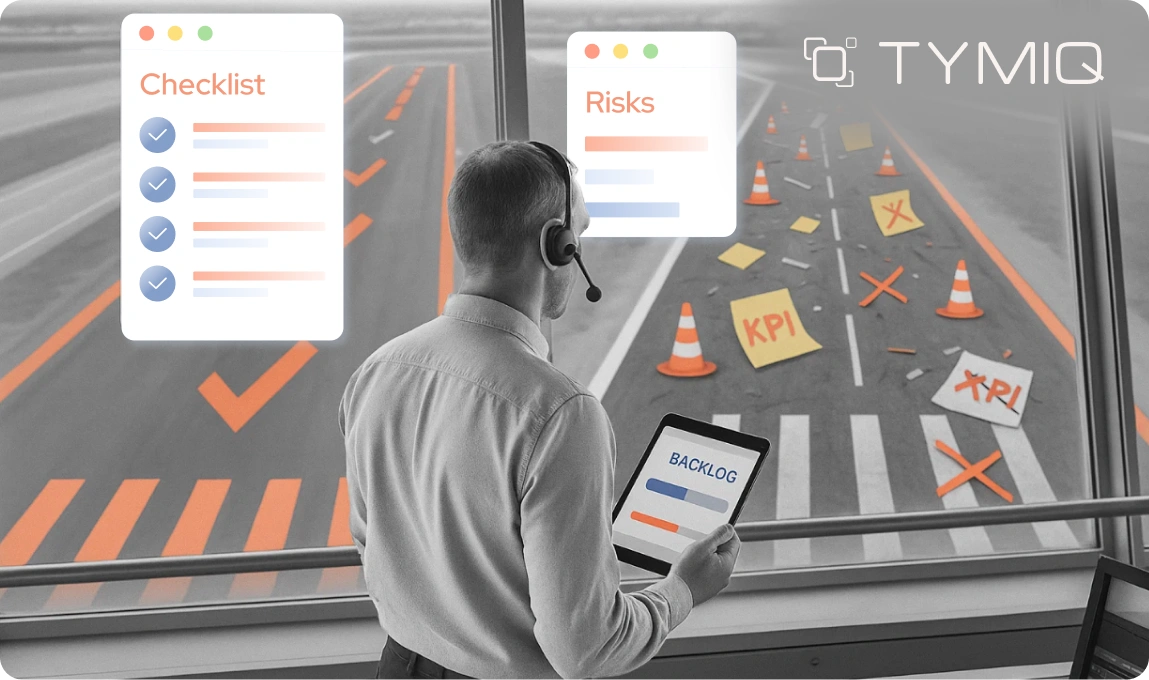
Before you onboard developers or launch a delivery sprint, hit pause, then verify. A readiness review isn’t a formality; it’s the final safety check before takeoff. This step ensures that vision, scope, tools, roles, and risk are aligned, and that you’re not handing a high-performance team an unfinished runway.
Key actions
Review the full checklist
- Is sprint 1 clearly scoped and approved?
- Is CI/CD operational with at least one test deployment?
- Are onboarding materials finalized and distributed?
- Is the backlog groomed and prioritized for the first two sprints?
- Are legal and compliance documents fully executed?
Run a joint kickoff session
- Involve business, product, and delivery leads.
- Walk through sprint 1 goals, success criteria, and known risks.
- Clarify escalation paths, dependencies, and stakeholder expectations.
Confirm ownership and accountability
- Who owns what (for example, backlog hygiene, approvals, DevOps)?
- Are there named owners for QA, non-functional requirements, and delivery metrics?
- Is there a standing cadence for retrospectives and leadership check-ins?
TYMIQ example
For a FinTech MVP, we locked all readiness items by day 28: infrastructure, onboarding, scope approval, and KPIs. On day 29, developers began coding with zero blockers. That momentum carried through launch, with no mid-sprint surprises or re-scoping fire drills.
Readiness review artifacts
- Completed nine-step checklist
- Sprint 1 kickoff deck with links to backlog, KPIs, and risk register
- Recorded kickoff call for future onboarding use
- Sign-offs from all key stakeholders
Skipping this step is like launching a product with no QA. It’s the final moment to spot what’s missing, align everyone in the loop, and enter development with full confidence and no second-guessing.
Quick self-test: Are you actually ready to hire?
Before you send out job offers or sign a vendor agreement, take a breath and take this five-point gut check. If you cannot confidently check at least four of these boxes, hiring developers now will likely add drag, not lift.
Ask yourself
- Do you have the first sprint clearly defined with acceptance criteria and key performance indicators?
- Is your development infrastructure (continuous integration and continuous delivery pipeline, Git version control, and sandbox environment) fully operational?
- Do you share a common understanding of scope, key performance indicators, and risk assumptions across teams?
- Is your onboarding pack complete with role templates and system access instructions?
- Are all legal, intellectual property, and compliance safeguards in place and signed?
If four or more boxes are checked → you are ready, it’s time to build.
Fewer than three → pause.
Start with internal alignment or run a readiness advisory sprint. You will save weeks of rework and thousands of dollars in developer burnout.
Why this matters
We have seen companies spend tens of thousands of dollars on talented developers only to stall for weeks waiting on infrastructure, decisions, or legal redlines. Readiness is not just about tools; it is about clarity, commitment, and accountability. This test helps surface gaps before they become bottlenecks.
Real-world readiness in action: TYMIQ case highlights
You’ve seen the checklist. You’ve run the self-test. Below are three TYMIQ engagements where our pre-kickoff process helped teams launch fast, ship predictably, and scale with confidence across some of the most demanding environments in tech.
Air traffic control system
- Scope. Maintain a legacy system and run parallel modernization
- Industry. Aviation, ATC
- Challenge. A .NET Framework-based information display system was outdated, undocumented, and unsupported internally
Readiness highlights
- User needs were prioritized around what must stay unchanged for air navigation assistants under pressure
- Scope was locked via a lean scope deck with zero downtime tolerance
- Full system access, CI/CD, and documentation were provisioned before the first modernized module was delivered
Result
- A fully reengineered .NET Core system deployed across airports — zero downtime, full compliance with CAP 670, and ongoing support
E-procurement platform for 2 M+ suppliers
- Scope. Cloud migration, platform scalability, and ETL optimization
- Industry. E-commerce, B2B SaaS
- Challenge. Performance issues and scaling limits from third-party hosting and a monolithic architecture
Readiness highlights
- Pre-kickoff validation of the ASP.NET Core + React stack using sandbox testing under real load
- Fully Kubernetes-enabled CI/CD on Google Cloud provisioned before sprint 1
- Developer onboarding templates and cross-functional workflows aligned across internal and external teams
Result
- The platform migrated to microservices on Google Cloud, delivering 24/7 uptime, reduced infrastructure costs, and improved scalability for 15 + EU markets
Critical incident management platform
- Scope. Build a fault-tolerant, secure, and scalable SaaS platform from scratch
- Industry. Critical infrastructure, emergency communications
- Challenge. High-performance alerting system for 100 + enterprise clients in regulated sectors
Readiness highlights
- Sprint 1 goals defined as “reliable delivery under load plus compliance with CAP 670”
- Agile ceremonies and daily async workflows are set in place across embedded and cloud teams
- Legal, compliance, and data-security safeguards pre-cleared with EU-ready contract packages signed before development
Result
- A modular, cloud-ready platform still maintained by TYMIQ post-acquisition, known for high availability, compliance, and seamless scalability
Each of these projects reflects the same core truth: teams don’t fail for lack of talent; they fail for lack of readiness. TYMIQ’s upfront alignment, infrastructure-first approach, and strict onboarding discipline turn high-risk builds into high-impact results.
Don’t hire developers. Prepare to ship
Most vendor issues are not technical. They are readiness issues hiding in plain sight: unclear key performance indicators, undefined scope, missing continuous integration/continuous delivery, or makeshift onboarding.
At TYMIQ, we have seen what happens when teams skip foundational preparation: wasted sprints, developer churn, and delivery teams “waiting on the client” by day three. We have also seen the opposite: teams hitting sprint velocity from day one because everything was ready before the first commit.
The difference between flailing and flying is planning and ownership.
If you want to build fast, you have to slow down first. Nail your roadmap, align your teams, and prepare your technology runway before bringing developers on board.








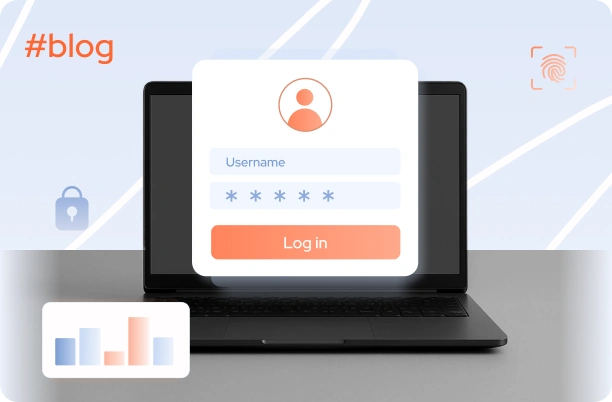


.svg)

